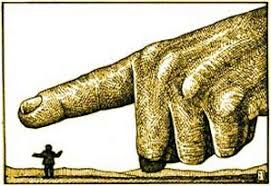
Neither Spiritual nor Religious?
One of the most solemn and ancient rituals of the Catholic Church is the Easter Vigil. As the name implies, it is held on the Saturday evening before Easter and following a long tradition of anticipating a feast day on the day before, it includes the first Easter Mass.
My wife, Amparo, and I hadn’t gone to an Easter vigil for several years, mostly because it is the longest Catholic service of the year and at our age, the frequent standing, sitting and kneeling is not easy.
But since we’re in a new parish in a new state, we decided to try it again this year. It was beautiful and inspiring, outweighing, for me at least, its length. The ritual includes lighting of the “new fire” and Easter candle, symbolizing Jesus’ new life as light of the world, lots of readings from new and old testaments, baptisms and reception of newcomers into the church and Mass of the Resurrection.
Renewed Interest?
During the Easter vigil this year in thoroughly secular France, according to a recent issue of America magazine, “more than 12,000 adults and adolescents were baptized, an increase of more than a third from 2023 and part of an increasing trend over the past 10 years.”
This seems counter-intuitive because the report was part of an article entitled, “Why People Are Rejecting Religion and How to Draw Them In.”
I’ve written a lot about this subject in this blog because the main target for the blogs is “people who have given up on God and/or religion.” Data show that most of such people are young, and I have no illusions about the number of readers the blog has among this population.
Getting young people – or perhaps anyone – to read about religion and faith is a major challenge, so it’s unlikely that I’m directly reaching much of my target audience.
Passing It Along
However, I believe that many older family members and friends are among the audience for this blog – which in the last few months is reaching 800-1,000 people a week – and I hope many of such readers are passing the blog on to family and friends who could best benefit from it.
But back to the America magazine article. It relies heavily on a March report from the Public Religion Research Institute, which describes itself as “a nonpartisan, nonprofit organization that conductsresearch on the intersection ofreligion, politics, and culture in America.”
Following a trend that is at least 15 years old, the latest poll from the organization found that “26 percent of Americans now identify as religiously unaffiliated, a 10-point increase since 2016.” And only four in 10 of this population, known as “nones” – named for the answer to the question about their religious affiliation – describe themselves as “spiritual.”
In other polls, respondents have often described themselves as “spiritual but not religious.” Now a greater share of that population say they are neither. Doesn’t surprise me, really. Spirituality is not a do-it-yourself undertaking.
So, what does religion offer? What I believe individuals, and society, urgently need to establish and sustain a relationship with God and a reason to love others.
Major Role
I don’t believe I’m naïve about the difficulty of the second part of the article’s title, “How to Draw them In.” But we believers have a major role to play, not in preaching, proselytizing or even focusing on religious teaching, but in living our lives in such a way that people will be drawn to us and our faith.
One of the adults baptized in the French Easter Vigils put it this way: He was drawn to religion “clearly by the encounters, (by) attentive priests, a joyful and dynamic parish community. Through them, I discovered an open and welcoming church….”
Unfortunately, the cultural climate heavily favors a mindset that ignores God and the most important questions about human existence, morality and ethics.
How’s that working out?



